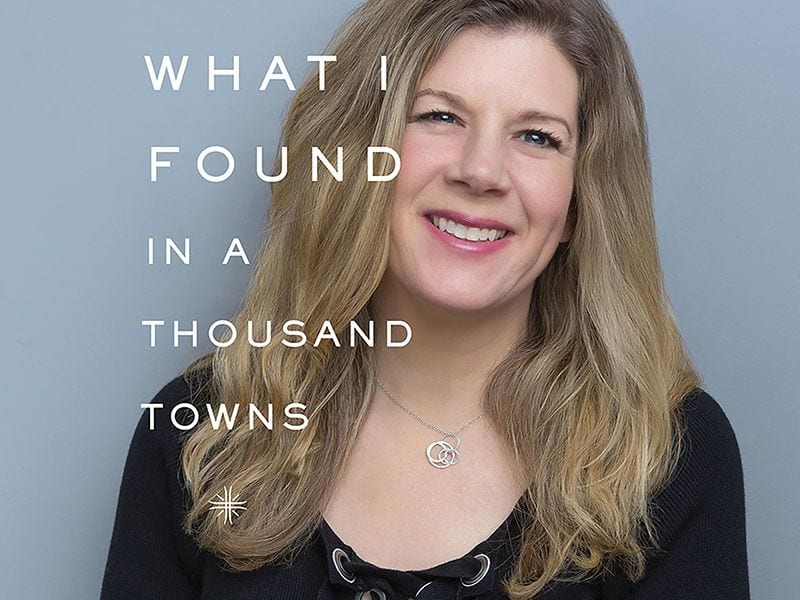
Years of touring the United States as a folk musician gives the artist Dar Williams serious credibility with one of her most ambitious works yet: a persuasive collection of case studies on how communities have tapped the natural world, culture and other passions to build highly engaged places to call home.
Williams, a resident of Beacon, New York, cites many observed ups and downs with community building in What I Found in A Thousand Towns: A Traveling Musician’s Guide to Rebuilding America’s Communities—One Coffee Shop, Dog Run and Open-Mike Night at a Time. She lets it all hang out with piercing opinions and shrewd take-aways.
Williams divides her book into three sections: the first on the role of physical spaces in creating community, the second on subject areas like food, supporting community identity building, and what she calls “translation” – the relational, people-to-people glue of civic engagement.
A key message of the book is that positive proximity – what Williams describes as “a state of being where living side by side with other people is experienced as beneficial” – is a critical component of creating attractive towns and cities, and that it can be intentionally sculpted in tailored ways that play to a community’s particular strengths, traits, quirks and blessings.
Take, for example, the Philadelphia suburb of Phoenixville, Pennsylvania. Williams focuses on the community’s embrace of its steel industry history in her chapter on how some areas have been able to play to the past in order to fuel vitality for the future. She succinctly explains the economic forces that have beleaguered former industrial towns before describing how determined residents have looked to historical assets – like beautiful old buildings and narratives of manufacturing might – to pave a path forward.
One of the most endearing aspects of Williams’ writing is the heart-on-sleeve human element. In What I Found in A Thousand Towns, readers get a visceral sense of how much she cares about the communities she’s visited as a performer since beginning her career in the early ’90s. She recalls her initial fear that Phoenixville would not be able to support a rehabilitated historic theater venue. “Part of playing in towns is that I worry about them,” she writes with an earnest and compelling sentimentality. She has not been a mere visitor, callously passing through all those years. No, Williams has been a champion of these communities all along the way, even if her civic fandom has been transient in nature.
One could imagine that the tour circuit could create a muddled, haphazard memory book. But Williams shares vivid recollections of transformation she has witnessed in particular communities. Her career conveniently traces a period in American history in which many localities have transitioned – rapidly, in some cases – from hollowed out to now so desirable that they have displaced the same people who have lived there through all the economic highs and lows.
The topic of gentrification is inextricably knotted up into conversations around race and power. While Williams doesn’t avoid these discussions, she also doesn’t sink into the subject as deeply as perhaps she could. That’s a shame, because some of her richest insights come when she describes the dynamics of skin color. “Again, the lineup was about 90 percent white in a neighborhood that looked 90 percent black,” Williams writes, describing a theater calendar of upcoming shows in Wilmington, Del. “I recognized the name of one white woman who was coming at the end of December. It was me.”
At times, What I Found in A Thousand Towns gets stuck in a textbook-style quicksand: Williams can belabor her points and overextend case study examples. But that same painstaking detail and narrative elaboration makes for many illustrative stories for those readers who may be seeking inspiration for community rejuvenation in their own towns and cities. And Williams makes balanced points packed with common-sense wisdom that’s in short supply in today’s fearful, polarized America. “Not every army coming up over the hill is a friendly one,”,Williams writes as she encourages communities to embrace progress. “But if you resist change wholesale, you might find yourself behind the times for no good reason, caught up in blame, resentment and frustration.” What I Found in A Thousand Towns is a winning playbook for the sunnier perspective – a patently American bear hug of risk, possibility, and hope for a better tomorrow, starting right there, in the neighborhood.

